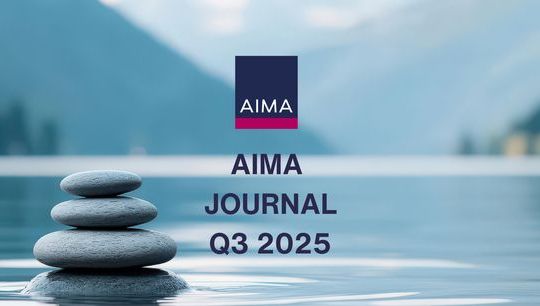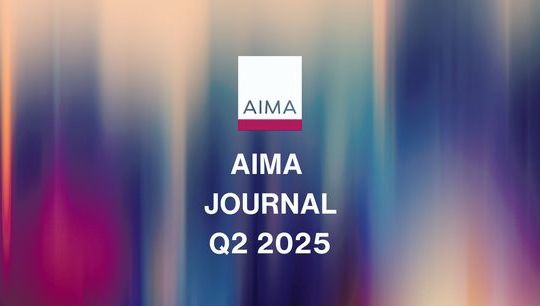Alternatives: Becoming mainstream in India asset allocation
By Vivek Sharma, Nuvama Group
Published: 20 November 2023
India’s robust economic growth has created new investment opportunities for both domestic and foreign investors. The country, the fifth-largest economy in the world, now has significantly more high-net-worth individuals (HNIs). Rising household savings due to higher per capita income and increased awareness of financial products has hastened India’s transition into the financialisation of savings. This has sparked a desire to take risks and, also a search for unconventional investment vehicles.
Alternative investment funds (AIFs) have emerged as a robust alternate and are in high demand. Over the past ten years, AIFs have experienced rapid growth in India, improving the investment climate in the nation. It has grown ten times in the last seven years. AIFs were largely unknown a decade ago and were believed to be the sole property of foreign institutional investors.
AIFs are privately pooled funds that invest in infrastructure, hedge funds, private equity, venture capital, etc. They are typically only available to retail HNIs or ultra-HNI investors who can afford to invest at least ~US$125,000.1
Growth drivers
The AIF market segment in India is growing exponentially driven by micro and macroeconomic factors, a robust policy framework and relaxed taxation norms.
The country is one of the fastest growing economies in the world, compounded by expanding infrastructure, the third-largest startup ecosystem, and a thriving business environment, all of which contribute to the success of AIFs. India’s thriving capital markets and the general decline in interest rates have made it a popular destination for investors. If HNIs want significant returns without taking on too much risk, AIFs present an alluring investment option.
Along with traditional investments in equity, gold, and real estate, investors are also looking into alternative investment opportunities. Investment options in bonds that support both public and private infrastructure are in greater demand. AIFs provide investors with a lucrative opportunity while bridging the supply and demand gaps. AIFs benefit from and contribute to the nation’s economic development as a result. Little wonder, the AIF industry is finding new wings.
In a nutshell, the AIFs have seen a steady rise due to the following reasons:
- A steadily growing economy;
- Favourable regulatory framework;
- There is no immediate connection to stock markets;
- Unique opportunities and possibly higher investment returns;
- Risk management and diversification;
- Prompt investments in a portfolio of companies to increase returns;
- Serve as a buffer during periods of market volatility or financial crisis;
- Mainly invested in securities that are not listed or unlisted.
Data
AIFs in India have come of age and experienced an annual growth rate of 30% in FY23.
According to recent trends, AIFs are getting a lot of attention. By the end of March 2023, AIFs had committed a total of approximately (~)US$100 billion, had a corpus of ~US$44 billion, and had invested a total of ~US$40 billion, according to cumulative data compiled by the market regulator Securities and Exchange Board of India (SEBI). Corresponding to annual growth rates of 30%, 16.49%, and 19% respectively.
According to the Indian Association of Alternative Investment Funds (IAAIF), the AIF industry managed assets worth a total of ~US$84.3 billion. The industry is currently expanding thanks to a constantly growing pool of domestic investors. Domestic investors now provide 80–90% of the funds raised, as opposed to a decade ago when foreign investors made up the majority of capital infusions. According to current trends, the AIFs industry in India, which is estimated to be worth ~US$554 billion, may be comparable in size to the mutual funds.
Favourable regulations
Indian AIFs, with 885 registered in FY22, offer customised products, flexibility, unique opportunities, experienced management, and strategic diversification, demonstrating the rapid growth of the AIF segment since 2020.
Favourable policy framework, statutory mandate and regulatory compliance pivot an industry’s growth in an economy. Similarly, investor-friendly policies are providing the AIFs the stability they need to flourish. Some strategic policies merit a mention.
For example, early in June 2023, SEBI began implementing new rules, which include:
i. Standardisation of the process for valuing investment portfolios;
ii. Requirement for the dematerialised issuance of AIF units;
iii. A framework for the liquidation scheme to help AIFs manage investments that become unsellable due to a lack of liquidity when the scheme is being dismantled.
The tightening of regulations has significantly increased investor confidence. SEBI has received more than 55 applications for AIF registrations between April and July; thirteen of these applications have been approved and are awaiting payment of the registration fees. This ongoing interest and regulatory vigilance indicate that the Indian financial landscape is a robust and responsive environment for AIFs.
Subsequently, in September 2023, SEBI reviewed its quarterly reporting format to improve compliance reporting, promote uniformity in compliance standards, and support regulatory and developmental goals. Starting December 2023, AIFs must submit revised quarterly reports electronically via the SEBI Intermediary Portal within 15 days at the end of each quarter.
Advantage India
AIFs typically have higher return potential than other alternative investment options. The sizeable aggregate gives the fund managers enough room to create flexible strategies aimed at maximising returns.
AIFs had accumulated commitments totalling ~US$102 billion as of the June quarter, with investments crossing ~US$42.1 billion for the first time. On an annual basis, the segment saw substantial growth of more than 20%. The total investment commitments for Category II funds as of June 30 totalled ~US$84 billion. In contrast, ~US$7.6 billion and ~US$10.2 billion, respectively, were committed for Category I and Category III funds.
Investors typically commit to making these investments in tranches, which are reflected in the total amount of funds raised by the fund managers. A total of ~US$45 billion had been raised as of the end of June, of which ~US$33 billion came from Category II A IF contributions. Based on the available information, investments total ~US$42 billion, or roughly a 4% progression.
Opportunities for global investors
According to Ernst and Young, AIFs have become extremely popular in India because they give investors a wide range of alternative assets, including infrastructure, real estate, and private equity. They provide diversification beyond conventional investment options such as equities, bonds, currencies, or gold.
AIFs give global investors the opportunity to invest into industries with enormous growth potential, like technology, healthcare, renewable energy, and infrastructure. Investors can ride the wave of India’s changing economic landscape and potentially earn sizable rewards by investing in these promising sectors, and a scope to diversify their portfolio.
The different categories and the funds:
| Category I | Category II | Catgory III |
|---|---|---|
| Venture capital funds (including angel funds) | Real estate funds | Funds that engage in many complex trading techniques, e.g., listed, or unlisted derivatives. |
| SME funds | Private equity funds (PE funds) | Hedge funds, private investment in public equity (PIPE) funds |
| Social venture funds | Funds for distressed assets | |
| Infrastructure funds |
Forecast
Investors are looking into alternative products as India’s economy expands at a rate of 7%. According to IMF projections, when India’s GDP surpasses US$5 trillion, it will pass Japan and Germany to become the third-largest economy in the world. India hopes to have a developed economy by 2047.
The expanding population of domestic investors from tier-II and -III cities could propel AIFs to the size of the ~US$481 billion mutual funds sector in the next few years. There is considerable familial and intergenerational wealth in these cities, and their involvement has been crucial to the wealth creation that the startup ecosystem has facilitated.
SEBI estimates that by 2022, fund administrators overseeing AIFs will have raised close to ~US$1010.7 billion in capital, up from less than ~US$54 billion two years prior. Approximately 72,000 individual contributions have been made to AIFs. This has been established on retail, HNI, or ultra-HNI capital, as opposed to institutional capital, which has been the foundation of global AIFs. Clearly, the situation has changed for investors. The ecosystem has expanded, which is beneficial for all parties involved, and the market now offers a wealth of nuanced data.
Challenges and the way forward
The entry threshold for this category is ~US$125,000.1, which restricts the accessibility of these investments to retail investors in general. Category-III AIFs, such as hedge and private equity funds, are limited to investing only 10% of their capital in a company when it comes to AIF investments.
AIFs are adaptable investment vehicles capable of providing one-of-a-kind investment solutions spanning various asset classes, themes, and strategies. Conversely, considerable effort is required to further develop the AIF industry and ensure that a broader spectrum of eligible (accredited) investors can benefit from AIFs. To ensure that all participants in the ecosystem can leverage the full potential of AIFs as investment vehicles, prevailing obstacles, including taxation, benchmarking, and transparency, must be proactively addressed by stakeholders.
Furthermore, despite the tremendous growth of the AIF ecosystem, distribution in India continues to be a challenge. Although regulations have simplified the process for asset management firms to introduce AIFs, distribution fees must be kept in check to encourage the industry to facilitate technology-driven investor onboarding.
In summary, an AIF investment environment that is prosperous and provides a variety of risk-return vehicles and investment solutions will benefit investors, institutions, and the economy in the long run.
Visit www.nuvama.com and read Nuvama Disclaimer for more information.
1. This may vary as per US dollar to rupee conversion rate.







